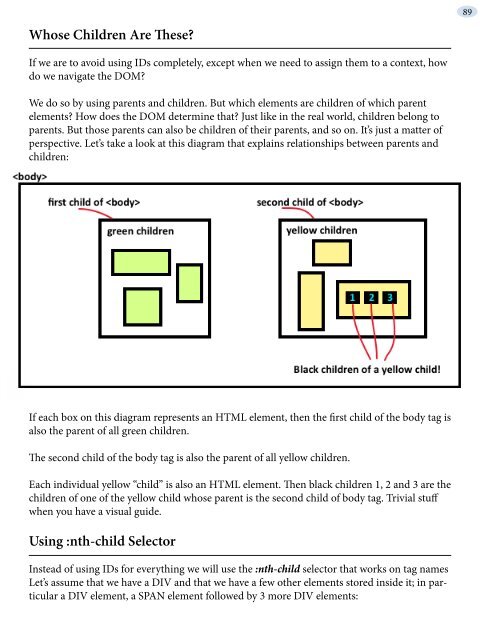hide - Understanding jQuery
hide - Understanding jQuery
hide - Understanding jQuery
You also want an ePaper? Increase the reach of your titles
YUMPU automatically turns print PDFs into web optimized ePapers that Google loves.
Whose Children Are These?<br />
If we are to avoid using IDs completely, except when we need to assign them to a context, how<br />
do we navigate the DOM?<br />
We do so by using parents and children. But which elements are children of which parent<br />
elements? How does the DOM determine that? Just like in the real world, children belong to<br />
parents. But those parents can also be children of their parents, and so on. It’s just a matter of<br />
perspective. Let’s take a look at this diagram that explains relationships between parents and<br />
children:<br />
If each box on this diagram represents an HTML element, then the first child of the body tag is<br />
also the parent of all green children.<br />
The second child of the body tag is also the parent of all yellow children.<br />
Each individual yellow “child” is also an HTML element. Then black children 1, 2 and 3 are the<br />
children of one of the yellow child whose parent is the second child of body tag. Trivial stuff<br />
when you have a visual guide.<br />
Using :nth-child Selector<br />
Instead of using IDs for everything we will use the :nth-child selector that works on tag names<br />
Let’s assume that we have a DIV and that we have a few other elements stored inside it; in particular<br />
a DIV element, a SPAN element followed by 3 more DIV elements:<br />
89


